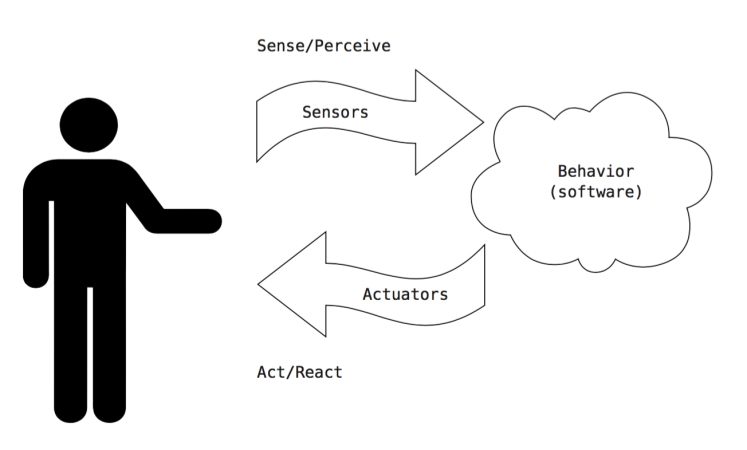making computers understand the physical world around us
+++
+++

The Kinect introduced skeletal tracking for full-body interactions but as you can see the image that the computer has of the human is still reductionist at best. +++
+++ I'm sure you have heard about this Arduino thing. +++
(think of it as a wee little computer if you will) +++
(your washing machine has one)
Note:
microcontrollers far exceed the number of computers in the world and they have been around for a very long time
+++

+++
what are all these weird objects? +++
CH340G serial driver install +++
get a recent version, greater than 1.8 +++
+++
Disable SIP +++
if so let's move on +++
load it from the examples > basics > Blink menu +++
sensors and what they do +++
A sensor is an electronic device that can transform a physical property of our world into an electrical signal that a computer can understand.
The only thing that you need to know about a sensor for now is that it is "a value that moves through time". People in finance call that a "ticker" in EE it's called a "signal" in electronic music they call it a "control signal" but in all of them they mean "a value that moves through time". +++
We can classify them according to the kind of signal that they produce:
- digital (two states)
- shit happened (HIGH = 1)
- shit didn't happen (LOW = 0)
- analog
- how much of the actual shit happened
- it is often a number between 0 and 1024 +++
+++
- PIR sensor (passive infrared) +++
- Button
- Switch
- Potentiometer
- Capacitive sensing
- simple resistor circuit (see cap. sensing slides)
- QT113 +++
- Tilt sensor
- Vibration sensor
- Joystick +++
- LDR
- Flame sensor
- UV index sensor
- Color sensor (RGB)
- Camera (3CCD)
- Thermal camera +++
- Barometric pressure
- Wind (anemometer)
- Temperature
- Soil humidity
- Atmospheric humidity
+++
James Bridle's A Ship Adrift
where he installed a weather station on top of the Southbank Centre in London and used the data generated, including wind speed and air pressure, to determine the path of an "imaginary mad airship". The program logs its theoretical position on Google Maps and gathers streams of information from the internet that are tagged with that location, using them to generate tweets and a log that combine a selection of words it picks up. from Dezeen
+++
Weather thingy by Adrian Kaeser
+++
- Fingerprint scanner
- RFID/NFC
- Keypad +++
- Magnetometer
- Hall effect sensor (magnetic fields)
- Compass
- Solar cell +++
- Microphone
- Clap sensor +++
Are kinds of signals that can be (continually) measured and monitored from biological beings. The term biosignal is often used to mean bio-electrical signal but in fact, biosignal refers to both electrical and non-electrical signals. +++
- EEG (electroencephalogram)
- EKG/ECG (electrocardiogram)
- EMG (electromyographer)
- Respiration
- Goniometer (position / angle)
- Pulse oxymeter (pulse / light) aka PPG photoplethysmography
- GSR (galvanic skin response, aka EDA electro dermal activity)
- Esthetoscope (sound)
- Ultrasound (baby's heart monitor) +++
- Breathing rhythm (lungs)
- Muscles
- Heart
- Gut +++ Most biosignals are either electrically weak or acoustically weak and they all are fairly complex, so they require heavy amplification are prone to noise and require extensive digital signal processing (DSP) before they can be used. +++







